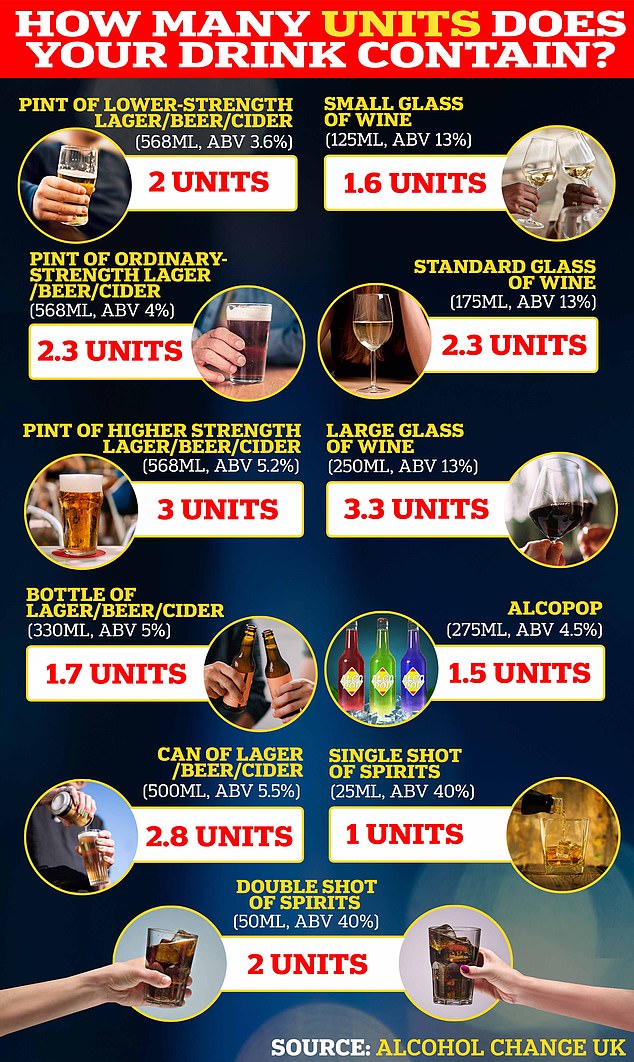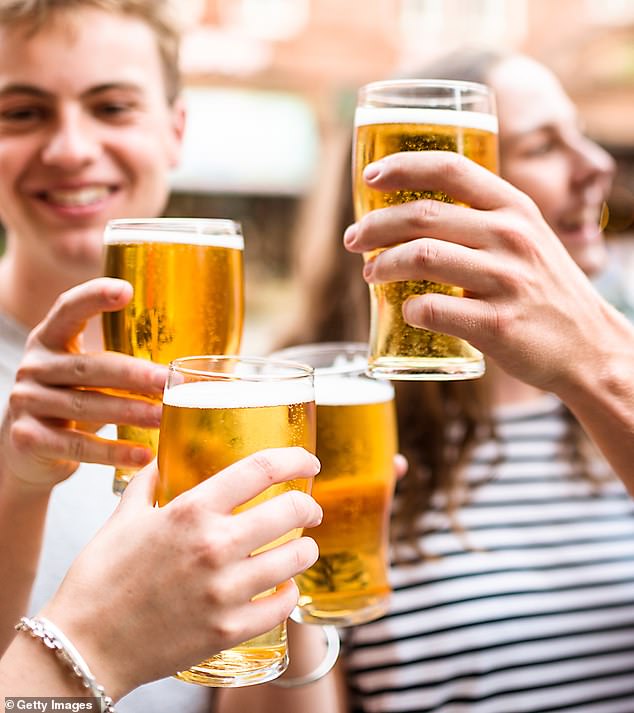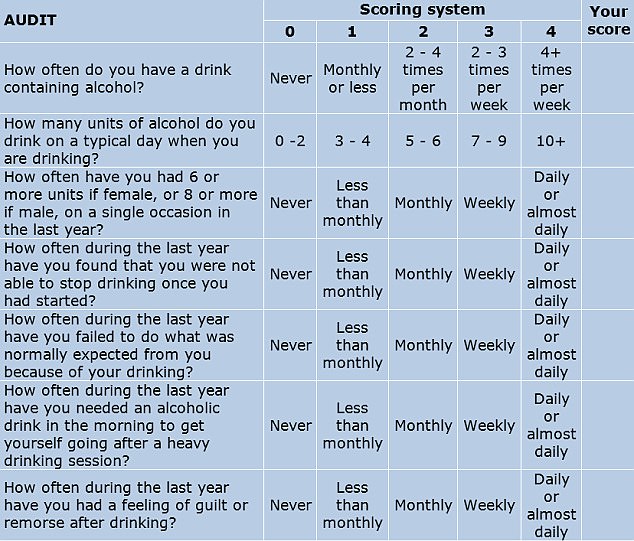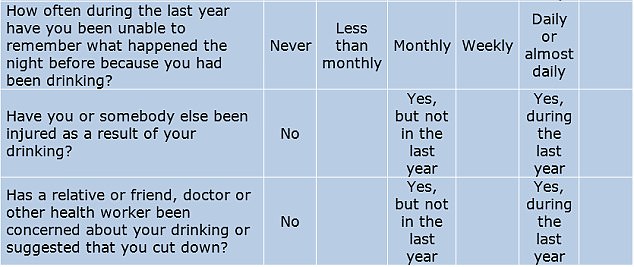Britons are among the heaviest drinkers in Europe, new data shows, with men drinking more than three times as much as women.
Men drink 850 pints of beer a year, while women drink the equivalent of 327 glasses of wine.
Britain ranks 18th out of 51 European nations for alcohol consumption: people drink 2.9 units (23.5g of pure alcohol) on average each day, or 20.3 units per week, the same as 10 pints of beer or 13 glasses of wine.
This is well above NHS guidelines which state that adults should not drink more than 14 units per week on a regular basis.
New figures from the World Health Organisation (WHO) show that Europeans are the world’s biggest drinkers, consuming 9.2 litres of pure alcohol (equivalent to 460 pints) each year on average.
This compares to an international average of 5.5 litres (275 pints) per person.
Europe’s biggest drinkers are in Romania, where men drink the equivalent of 1,365 pints a year and women drink 500 glasses of wine.
British men drink the equivalent of 850 pints of 3.6% beer a year, according to data

Women in the UK consume the equivalent of 327 small glasses of wine each year, according to WHO figures
Romanians drink 4.6 units of alcohol a day (36.9 grams of pure alcohol), which is equivalent to almost two and a half pints or three glasses of wine.
Turkey, by contrast, is the country with the lowest alcohol consumption. The predominantly Muslim country has raised taxes on alcohol and limited the availability of alcoholic beverages, with many residents abstaining for religious reasons.
Italy, known for its love of food and wine, was surprisingly modest: its inhabitants drink the equivalent of 635 beers or 233 glasses of wine annually.
And Albania, one of the world’s leading cannabis-growing countries according to the United Nations Office on Drugs and Crime, drinks even less: its citizens consume just 420 beers or 127 glasses of wine a year.
This comes after separate data showed that alcohol-related deaths are rising in the UK, mainly from damage to the liver and other organs.
Dr Gauden Galea, Special Adviser on Health to the WHO Director for Europe, said: ‘When we look at the latest report on the global alcohol situation, one WHO region stands out.
‘The European region continues to hold the unenviable record of having the highest levels of alcohol consumption and related harm worldwide, as well as the lowest number of abstainers.
‘The harms of alcohol can be devastating to health and wellbeing and reach far beyond the person who drinks to include domestic violence, injuries, accidents, family breakdowns and mental health.
“Countries must make a strong effort to implement policies that we know are effective in reducing alcohol consumption.”
According to WHO figures from 2019, British men drink the equivalent of 17 litres of pure alcohol a year, while women consume less than a third, 4.9 litres.
One unit is equivalent to 10 ml of pure alcohol, approximately half a pint. A small wine glass, 1.5 units, contains approximately 15 ml of pure alcohol.
A pint of 3.6 percent ABV beer has two units, but high-alcohol lagers and IPAs will contain considerably more per glass.
Across Europe, men consumed almost four times as much pure alcohol (14.9 litres) as women (4.0 litres) per year.
The WHO said there has been “little or no progress” in reducing alcohol consumption in line with its goal of cutting consumption by 10 percent.
Their data shows that in 2019 there were more than 470 million drinkers in Europe, meaning that two out of three adults consumed alcohol.
It is estimated that one in 10 adults in the region has an alcohol use disorder and almost one in 20 lives with alcohol dependence.

In England, Wales and Northern Ireland, the legal blood alcohol limit for driving is 80 milligrams per 100 millilitres of blood. Malta is the only European country to have such a high limit, while Scotland and much of Europe set the bar at 50 milligrams. Some nations set the bar even lower.
Despite these alarming statistics, only 12 out of 53 countries have made significant progress in reducing the amount they drink.
Dr Carina Ferreira-Borges, WHO alcohol adviser, said: ‘The high levels of alcohol consumption and associated harm in Europe are a clear indication that we are not doing enough.
“We are paying a high price for our inaction: alcohol causes hundreds of thousands of cardiovascular diseases and injuries, cancers and cirrhosis of the liver in our region.”
Alcohol is one of the leading causes of death in Europe, responsible for almost 800,000 deaths each year, or 9 percent of all deaths in the region.
Every day, around 2,200 Europeans die from alcohol-related causes, mainly heart disease and alcohol-related cancers.
According to the International Agency for Research on Cancer (IARC), alcohol is one of the main “Group 1” cancer-causing agents in the world.
The WHO has controversially recommended that countries raise alcohol taxes, restrict its marketing and reduce its availability to reduce deaths.
A project in Lithuania, Latvia and Estonia showed that people consumed less alcohol and lived longer after implementing alcohol control policies.
Dr Galea said: “We have the tools and knowledge to reduce alcohol consumption and associated harm. What we need now is the political will to implement these evidence-based policies.”
“We must accelerate our efforts and commit to the changes necessary to protect the health and well-being of our populations.”
Alcohol deaths have been rising in the UK for decades, but they spiked in March 2020 after the first national lockdown came into force and have progressively worsened.
Data from the Office for National Statistics, which does not include “alcohol-related” diseases such as cancer, showed that most deaths are linked to long-term drinking problems and dependence, with alcoholic liver disease accounting for 76 per cent of cases.
In 2022, more than 500 people died from accidental or intentional alcohol poisoning.




